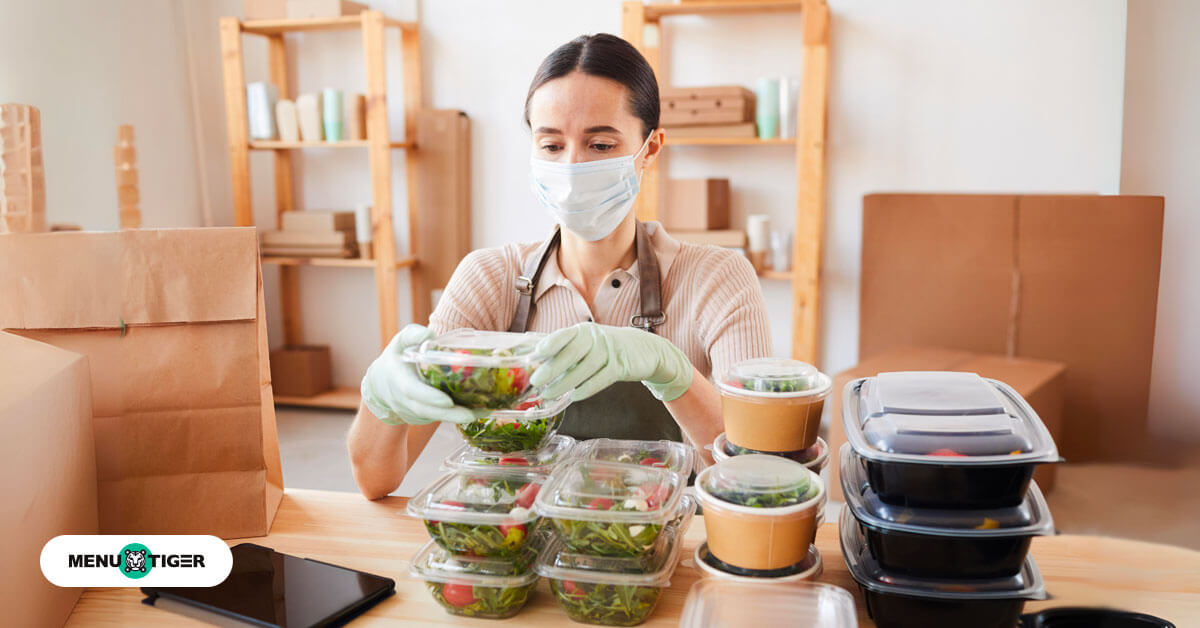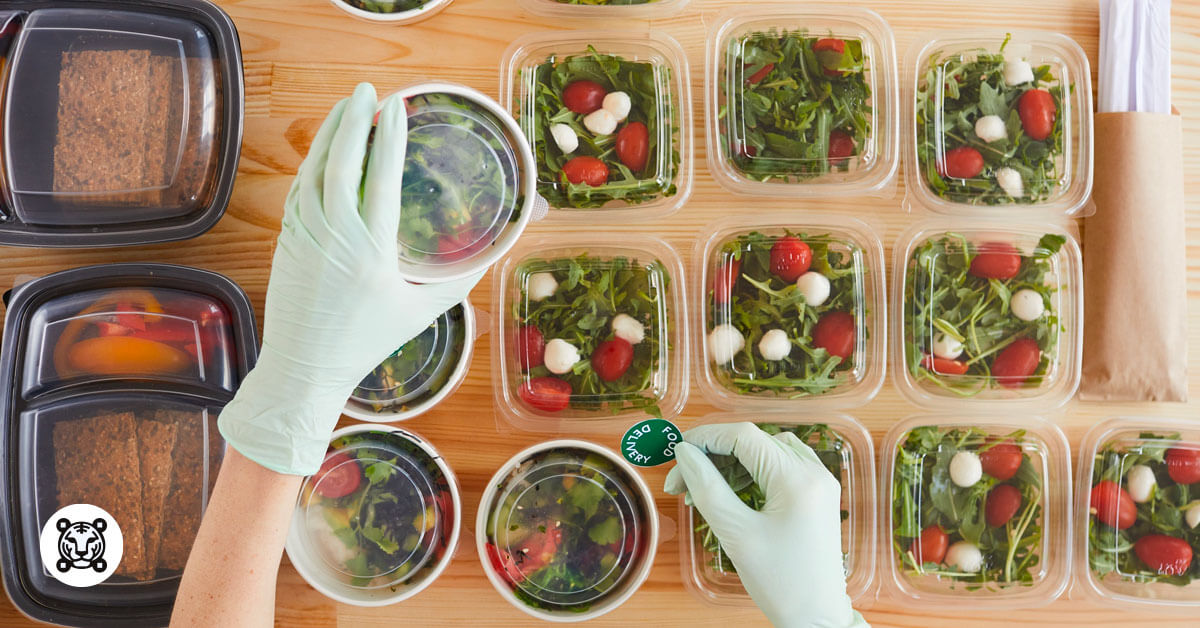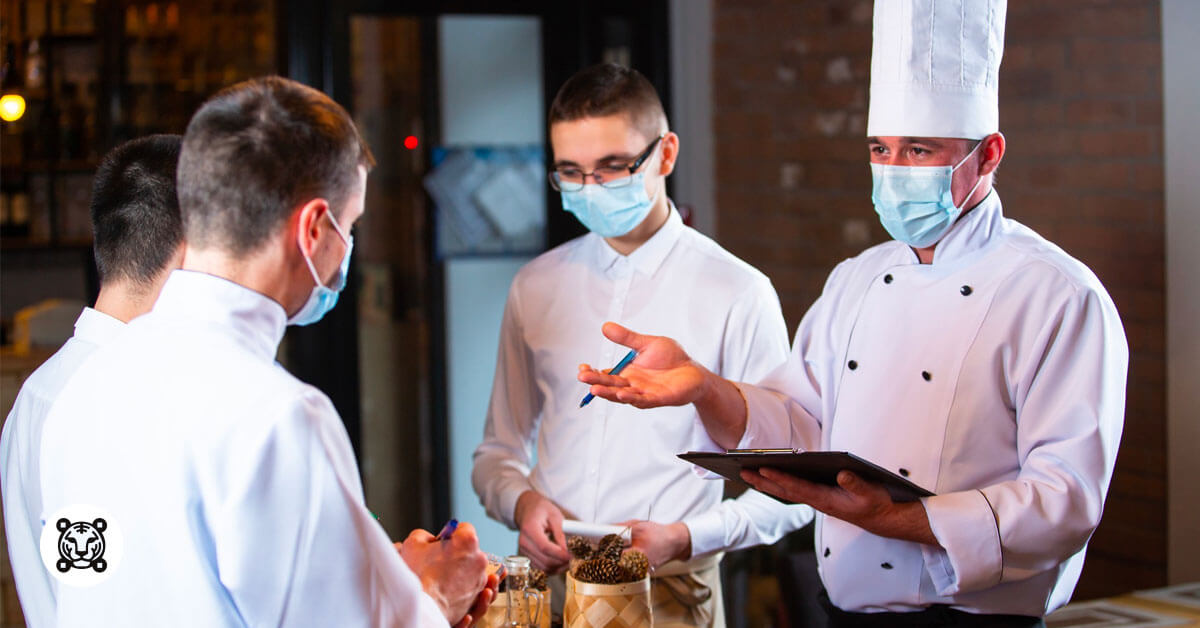
The Importance of Food Safety: How To Keep Your Food Safe
Last Updated: October 6, 2025
As the restaurant industry becomes competitive, you should not compromise the importance of food safety.
Beyond the aesthetics and taste profiles, having rigorous safety practices such as conducting comprehensive training programs, enforcing stringent food handling processes, and leveraging technologies like QR code menus for inventory and monitoring in your restaurant is an indisputable cornerstone of success.
The relevance of food safety transcends mere compliance—it’s a strategic imperative that protects public health and shapes the foundation of a thriving restaurant business.
In this article, we’ve prepared a list of how to keep your food safe to help you build food safety measures.
What is food safety?

Food safety is a comprehensive discipline that includes scientific principles and practical measures to guarantee that your food is safe.
According to the World Health Organization (WHO), an estimated 600 million people worldwide—nearly one in ten—fall ill after consuming contaminated food, and 420,000 of them die every year.
This implies that improper food preparation handling can seriously affect consumers.
That is why it is essential to know, especially in the food and service industry, how to keep your offerings free from contamination and minimize risks of causing harm to consumers.
Why is food safety important: 5 reasons you should know
Here's a list of reasons why food safety is essential in your restaurant. Knowing key food safety facts can help you better understand and apply the practices that protect your customers and business:
Public health protection
Contaminated or mishandled food can lead to foodborne illnesses that pose significant risks to individuals and communities.
Making sure your food is safe for everyone is paramount for safeguarding public health. This will minimize the occurrence of such illnesses, protecting the well-being of your customers.
Prevention of food waste
Proper food safety measures, including correct storage and handling, help prevent premature spoilage.
By minimizing food waste in restaurants, you can optimize resources, make the best menus to keep food costs down, and contribute to sustainable practices, aligning with environmentally-conscious consumer preferences.
Customer trust and reputation
Maintaining high food safety protocol standards is crucial for building and retaining customer trust.
If your restaurant has a reputation for safe and hygienic practices, it will foster customer loyalty and positive reviews.
Legal compliance
Adhering to food safety regulations is a legal obligation for food businesses like yours.
Compliance ensures that your establishment meets the standards set by health authorities and regulatory bodies, avoiding legal consequences such as fines, closure, or legal actions.
This is a way of protecting your business as well as your customers.
Economic viability
Safety measures on food influence the economic viability of the restaurant industry.
Incidents of spoiled dishes or customers having foodborne illnesses can lead to financial loss, legal expenses, and damage to the restaurant's branding and market standing.
Prioritizing these practices contributes to the long-term sustainability and profitability of your business.

9 ways to keep your food safe in your restaurant

Comprehensive staff training programs
Develop and implement thorough training programs for all your staff members.
Hire expert chefs with a completed Bachelor's in culinary arts, as a minimum, to ensure they possess practical skills you need to be a top chef and the entrepreneurial know-how.
Through rigorous training, your employees will acquire enough knowledge and skills in food-handling procedures to prevent any issues with contamination of your dishes.
Moreover, the importance of training programs on food safety goes beyond your kitchen. It fosters a culture of personal responsibility, emphasizing the significance of individual roles in upholding the standard for hygienic service.
Strict adherence to cleaning protocols
Establish and enforce rigorous cleaning schedules for all areas of your restaurant.
It protects against potential contamination and health hazards accumulated from your day-to-day operations.
Thorough and regular cleaning of your kitchen surfaces, disposable utensils, equipment, and dining areas is paramount in eliminating bacteria, viruses, and other harmful microorganisms that could compromise the safety of your dishes.
A spotless and sanitized environment is not only aligned with the health regulations set by your local government but also enhances your customer’s dining experience.
This will instill confidence in them about your restaurant’s commitment to their safety.
Temperature control
Implement strict temperature control measures for cooking and storing food.
The science behind this safety protocol is that certain temperatures can serve as breeding grounds for potential microorganisms like bacteria and pathogens.
Cooking at precise temperatures not only delivers the perfect texture and flavor but also eliminates these potential threats.
Likewise, in storing or transporting your food items, maintaining the correct temperature ensures that food remains in a temperature range that inhibits the rapid multiplication of bacteria, preventing spoilage.
Allergen awareness procedures using digital menu QR code
Clearly label your menu items with potential allergens.
Allergens are substances that can cause allergic reactions to your customers who are sensitive or allergic to them.
Your menu must have all the information your guests need when dining to avoid unfortunate events.
Managing these can be confusing if you jot them down manually through paper, but using advanced tools like a digital menu QR code to track the ingredients of your dishes and inform your customers will make the job easier.
All you need to do is add the details to your menu and let your guests scan them once you’ve printed them.
Another benefit you could get from using QR codes is that your customers can easily personalize their orders based on their dietary restrictions without fumbling through any menu sheets.
Regular staff education and updates

Foster a culture of continuous learning with your staff by providing regular updates on food safety guidelines, the industry’s best practices, and emerging trends.
This is pivotal in maintaining the standards in your restaurant when it comes to safe food practices.
Consider conducting periodic refresher courses and activities to reinforce your staff’s knowledge and skills.
Continuous learning ensures that they are well-equipped to adapt to new challenges and changes in safety protocols, ultimately reducing the risk of errors and promoting compliance for restaurant safety.
This will empower your staff to promptly recognize and address emerging risks, enhancing their ability to implement preventive measures.
Stringent food-handling processes
Emphasize and enforce proper food handling practices.
These include handwashing, gloves, hair net usage, color-coded cutting boards to prevent cross-contamination of raw and cooked food, dishwashing procedures, and pest control.
Make use of signage in your kitchen consisting of reminders on the safety procedures that should be followed so they can be guided on what to do.
Strict adherence to food handling procedures minimizes the risk of contamination, ensuring that as your dishes are being served, your guests are assured that they are safe for consumption.
Collaboration with reputable suppliers
Suppliers with credible transaction histories understand the importance of food safety handling.
You’re guaranteed that they will prioritize and adhere to rigorous quality control measures, ensuring the delivery of safe and high-quality ingredients.
Their commitment to compliance with industry regulations and standards reduces the risk of contaminated or substandard products.
Furthermore, these suppliers can provide transparent information about their goods' sourcing, handling, and processing, aiding traceability and swift responses to safety concerns.
Collaborating with them establishes a foundation of reliability and consistency that will contribute to your restaurant's robust food safety measures.
Regular health and safety inspections
Schedule regular health and safety inspections through local authorities.
It is not just for compliance set by your local governments. It will provide valuable feedback for continuous improvement of your current system.
Hire third-party inspectors to conduct comprehensive assessments of your guidelines and procedures.
Collect the results and respond to any identified issues promptly and transparently.
Implementation of technology for monitoring
Maximize the use of technology for hassle-free and contactless monitoring of your dishes from storing to ordering.
For instance, temperature sensor monitoring devices like refrigerators help track critical parameters in real time. You can control the temperature required for your ingredients to stay in their best condition before cooking.
Additionally, using interactive menu software will assist you in easily tracing your customers' orders, especially those with specific instructions on their food, such as dietary restrictions.
It will help you and your chefs prioritize their orders that need attention regarding their preparation and determine what safety measures they should apply while cooking.
Leveraging technology: The use of interactive restaurant menu software for food safety

Adapting a transformative approach to enhance food safety procedures in your restaurant is smart.
By leveraging the power of restaurant technology, like innovative menu software, you can streamline your operations and elevate your commitment to your customers' well-being.
MENU TIGER’s advanced features guarantee its multifaceted benefits will help bolster food safety measures for a safer and more efficient culinary experience.
Real-time ingredient transparency using a QR code menu
One of MENU TIGER’s advanced tools is a QR code menu that facilitates real-time tracking of ingredients used in culinary preparation with just one scan.
This gives your customers full access to every ingredient used in a dish and other valuable information they need when they order—one of the benefits of using QR code menu.
Allergen awareness and customization
Addressing customer allergies and dietary restrictions is a critical component of food safety.
With its interactive menu, you can seamlessly integrate detailed allergen information into each food item.
Customers can interact with your digital menu, customize orders based on dietary and allergy restrictions, and instantly receive information about potential risks.
This can enhance customer satisfaction and minimize the chances of allergic reactions, showcasing a commitment to safety and service excellence.
Customer feedback and incident reporting
This software acts as a direct channel for customers to provide feedback on their dining experiences, including any concerns related to food safety.
You can put QR codes on table tents and counters for your customers' easy access to them.
With its customer survey feature, you can collect suggestions or incident reports to investigate and solve potential issues promptly.
But don't forget to put an instruction on how to scan a menu QR code for customers who are new to this technology.
Supplier accountability and audits
With the Zapier integrations for restaurants’ advanced inventory and monitoring, you can integrate a supply management system to track the ingredient sources and quality.
Routine audits can also be linked with the help of this integration, which ensures suppliers adhere to stringent compliance with safety standards.

Emphasizing the importance of food safety measures with MENU TIGER
As a restaurant owner, knowing the importance of food safety in your business is a strategic imperative not just for success but also for your commitment to your customer's well-being.
In this digital age, using technology in building or upgrading your safety procedures is a wise choice.
By embracing interactive menu software like MENU TIGER, you’re assured of multifaceted benefits that can collectively contribute to a safer and more satisfying dining experience.
Let’s take this chance, create an account, and make a safe feast for your customers.
FAQs
Chevy
Before joining MENU TIGER's Content Team, Chevy has been dabbling in literary arts for five years, specifically creative writing in a theatre company. She loves exploring her creativity through painting, photography, and contemporary dancing.


